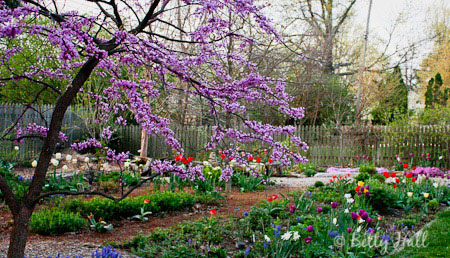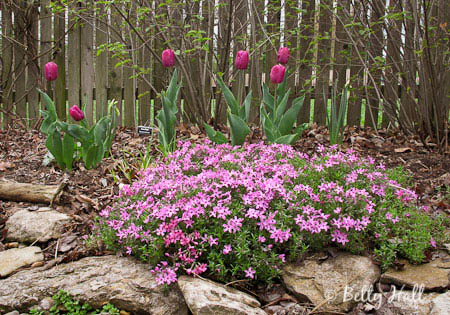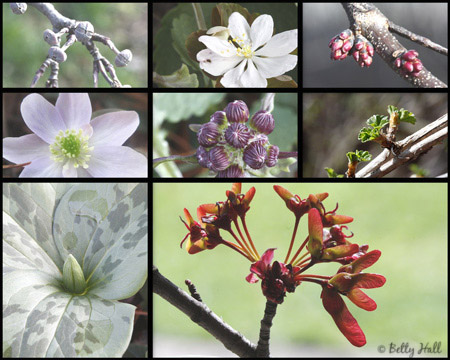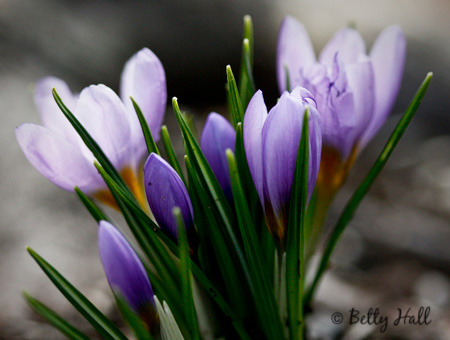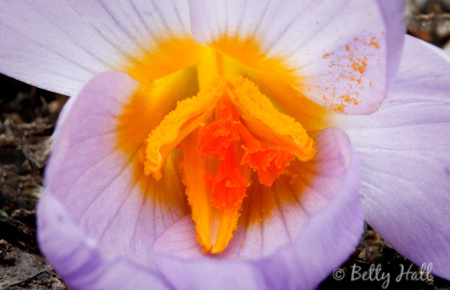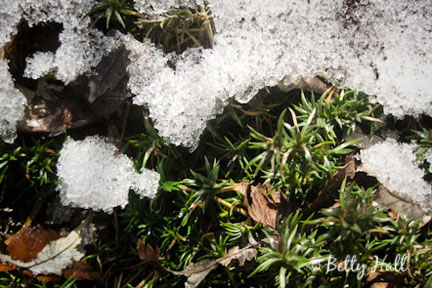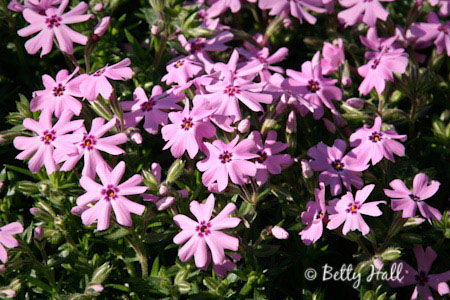As the summer solstice arrives, I’m seeing more flowers in the backyard. I’ve been unsure what would be blooming for the Wild Ones Kentucky native plant garden tour this weekend. It now appears there will be a nice variety. Here is the color in one corner of the garden.
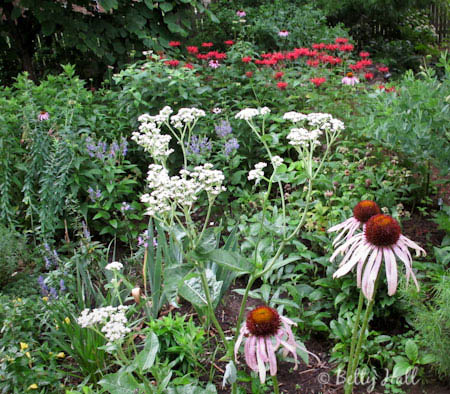 The Pale Purple Coneflowers (Echinacea pallida) and the white Wild Quinine (Parthenium integrifolium) in the foreground have been blooming for three weeks and will not last much longer. The purplish blooms behind the Quinine are Downy Skullcap (Scutellaria incana) which add nice contrast. In the background, the red Bee Balm (Monarda fistulosa) is at its peak and the Purple Coneflowers (Echinacea purpurea) are beginning to bloom.
The Pale Purple Coneflowers (Echinacea pallida) and the white Wild Quinine (Parthenium integrifolium) in the foreground have been blooming for three weeks and will not last much longer. The purplish blooms behind the Quinine are Downy Skullcap (Scutellaria incana) which add nice contrast. In the background, the red Bee Balm (Monarda fistulosa) is at its peak and the Purple Coneflowers (Echinacea purpurea) are beginning to bloom.
Other plants now blooming include:
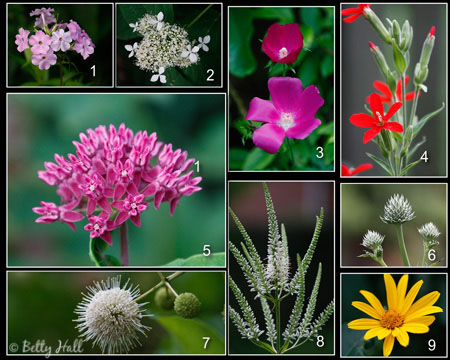 1. Garden Phlox (Phlox paniculata), 2. Wild Hydrangea (Hydrangea arborescens) 3. Purple Poppy Mallow (Callirhoe involucrata), 4. Royal Catchfly (Silene regia), 5. Purple Milkweed (Asclepias purpurascens), 6. Rattlesnake Master(Erynigium yuccifolium), 7. Button Bush (Cephalanthus occidentalis), 8. Culver’s Root (Veronicastrum virginicum), and 9. Ox-eye Sunflower (Heliopsis helianthoides).
1. Garden Phlox (Phlox paniculata), 2. Wild Hydrangea (Hydrangea arborescens) 3. Purple Poppy Mallow (Callirhoe involucrata), 4. Royal Catchfly (Silene regia), 5. Purple Milkweed (Asclepias purpurascens), 6. Rattlesnake Master(Erynigium yuccifolium), 7. Button Bush (Cephalanthus occidentalis), 8. Culver’s Root (Veronicastrum virginicum), and 9. Ox-eye Sunflower (Heliopsis helianthoides).
I’m delighted to see the mid-summer blooms and the various insects they attract. And I’m looking forward to sharing the backyard as part of the garden tour. If you are in the area, I hope to see you!

